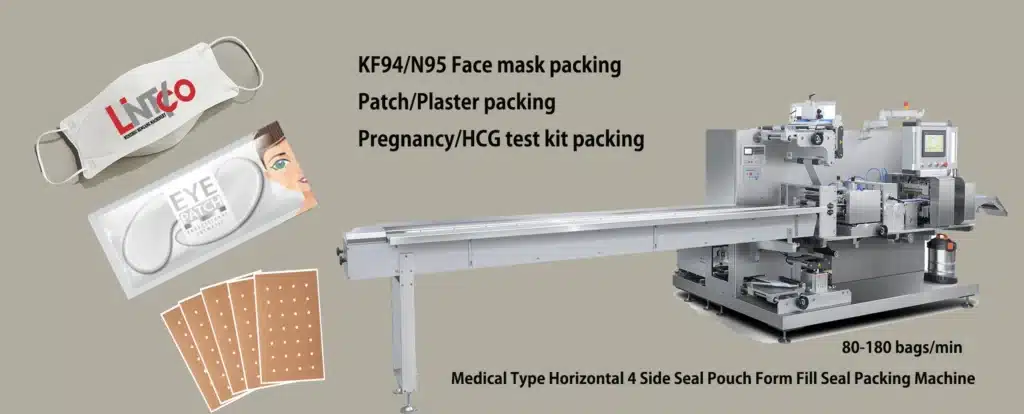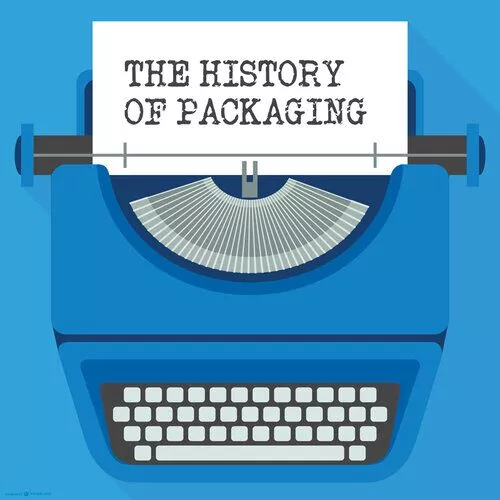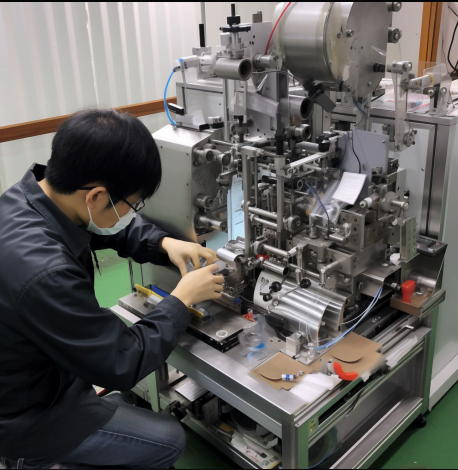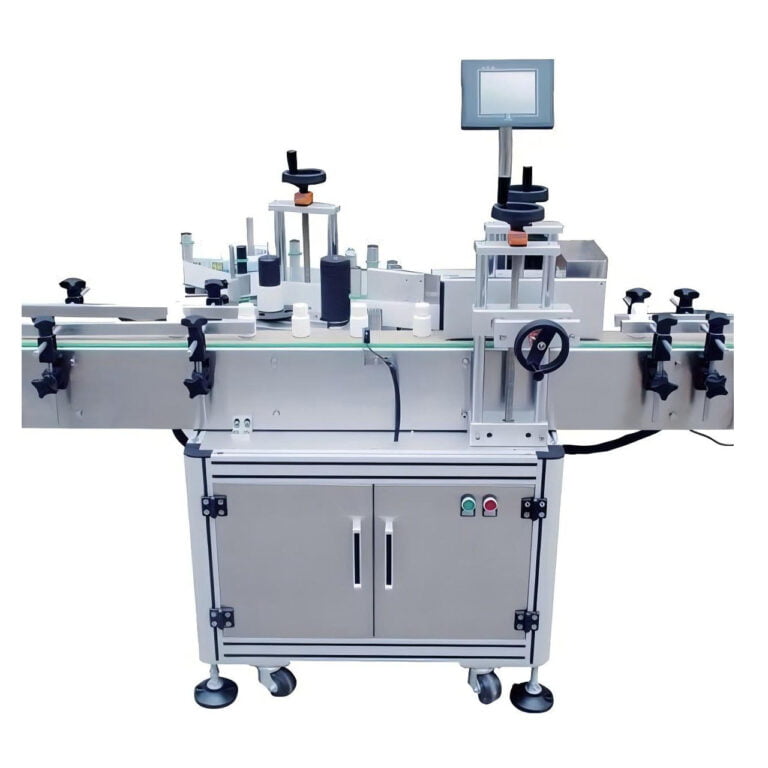
To be honest, as an engineer, we focus on packing machines for all industries. Some people said: “we are specialized in packing machines in quality” I didn’t think, we are just full of passion for packaging solutions. Now follow us to know more detail about automatic mask packing machine.
The packaging industry has embraced automation in a big way to improve efficiency, reduce costs and meet the growing demand for products. Automatic packaging machines have made the entire process faster, more precise and less error-prone. Among these automated machines are face or mask packing machines that efficiently handle the packaging of face masks and other protective covers.

Face masks have emerged as essential personal protective equipment due to the COVID-19 pandemic. The enormous surge in demand has led to the need for faster and more reliable packing machines. Automated mask packing lines not only ensure consistent packing quality at high speeds but also offer cost savings through resource optimization. They allow manufacturers to produce more masks in less time while maintaining product safety and integrity.
Technology has played a crucial role in developing automatic face mask packing machines that work with minimal human intervention. Complex software controls the entire process from counting, checking, folding and placing the masks into packing envelopes, pouches or containers. Multiple masks are accurately aligned before being placed in sterile packs ready for shipping. Speeds of up to 400 packs per minute are achievable with state-of-the-art systems. Consistency in packaging quality enhances consumer trust while improving brand perception.
In this blog post, we discuss the workings of automatic mask packing machines, the different types available along with their features and benefits. We explore how automation helps face mask manufacturers optimize resources, scale up production and ensure high packaging standards. The role of the latest technologies in developing faster, more precise and intelligent face mask packing systems is also covered.

What is an Automatic Mask Packing Machine?
An automatic mask packing machine is an automatic packaging system designed specifically for packing face masks and other protective face covers into pouches, envelopes or containers at high speeds. It minimizes human intervention and optimizes the packaging process using mechanical components, sensors, conveyor belts and software controls.
The core components of an automatic face mask packing machine typically include:
•Feeders – Feed the masks into the system in an organized manner
•Conveyor belt – Transfers the face masks through the machine
•Vision sensors – Detect defects, check orientation and count the masks
•Folding unit – Folds the masks into the required shape and size
•Packing station – Place the processed masks into envelopes, bags or other packs
•Sealing unit -Heat seals or stitches the packs
•Quality control systems – Ensure complete and correct packing
The basic operating process involves:
First, the face masks are fed into the machine through the feeder unit either manually or using automated feeding equipment. The conveyor belt then transfers the masks through various stations within the machine. Vision sensors identify faulty masks and ensure proper orientation. The folding unit folds the masks into the required shape or pleats them. The packing station accurately counts and places the processed masks into pouches, bags or envelopes. The packs are then sealed either by heat seal, gum stick, adhesive or stitching. Finally, quality checks are performed for fault-free packaging.
The Evolution of Packing Machines

The history of packing machines dates back to the 19th century with the introduction of the first semi-automated packaging solutions. Initially, packing was done entirely by hand which was labor-intensive and prone to errors.
The first semi-automatic machines in the 1870s used prefabricated packaging components like cartons and bags and mechanical means to fill and close them. However, they still relied on manual labour for tasks like product feeding and alignment. These early semi-automatic systems improved efficiency but could not match the high speeds of modern machines.
The shift to fully automated packing began in the early 20th century with the integration of the first electrical and pneumatic components into machines. This allowed the automation of tasks like product feeding and conveyance. However, machines were limited in function and designed for specific product types.
After World War 2, innovations in automation, controls and sensors enabled the next generation of highly automated packing machines. Equipment manufacturers also began offering more versatile machines that could handle different products and pack sizes.
The 1970s and 80s saw further advances with the adoption of programmable logic controllers, vision sensors and robotics. This led to the development of intelligent, flexible packaging systems that could be reconfigured easily.
Face mask packing machines were developed relatively recently to meet the surging demand for protective masks and covers. Early iterations were adaptations of existing automated packing solutions. However, specialized face mask packing lines soon emerged to handle the unique challenges of packing thin, pleated masks at high speeds.
Today, state-of-the-art packing machines utilize the latest Industry 4.0 technologies like artificial intelligence, machine learning and IoT sensors. These intelligent systems optimize the entire packing process, adapt to changing demands and achieve throughputs unimaginable in previous generations of machines. The evolution continues with new developments promising even higher levels of automation, flexibility and efficiency.
Benefits of Using Automatic Face Mask Packing Machines
Efficiency in the Packing Process
Automatic face packing machines optimize the entire packing cycle by automating tasks like counting, folding, placing and sealing. Each step is synchronized to minimize downtime and material wastage between stages. This results in a seamless, efficient production flow compared to manual packing processes that are prone to delays, bottlenecks and inconsistencies. Automatic systems ensure materials are utilized optimally with minimum interruptions to maximize output.
Cost Savings due to Reduced Labor
Since automatic machines require minimal human assistance, they significantly reduce the labour costs associated with manual packing. Only a handful of operators are needed for machine loading, monitoring and quality checks. This results in better utilization of workers for more value-added tasks. The reduced manpower needs also help eliminate issues like absenteeism and high turnover that plague manual labour-intensive operations.
Improved Accuracy and Precision
Complex vision systems and controls enable automatic machines to count, fold and place masks with pinpoint accuracy repeatably. Even minute mask deviations are detected and corrected. This level of precision is difficult to achieve consistently through manual packing, reducing issues like improper folds, miscounts and packaging defects. The machines ensure face masks are placed correctly in packs to maintain their shape and integrity.
Greater Consistency in Product Packaging
Automatic machines follow a set program to pack masks using the same motions and parameters. This delivers a high degree of consistency in pack size, shape, closure and presentation. In comparison, manual packing shows more variation due to human factors. Consistent packaging helps improve brand image and increases consumer trust. It also simplifies downstream processes like logistics and warehousing.
Enhanced Speed and Productivity
Advanced automatic machines can achieve throughputs of up to 400 packs per minute whereas manual packing typically ranges from 20 to 80 packs per minute. This significant increase in speed helps mask manufacturers scale up production and meet the huge global demand for PPE. Fully automated lines maximize uptime by reducing machine adjustments and stoppages for labour breaks. Overall equipment effectiveness is also improved, boosting the volume of good packs per hour.
Reduction in Waste and Errors
Automatic machines eliminate issues like improper folding, damaged masks, incorrect counting, missing packs and spillage – common problems with manual packing. Sophisticated vision systems ensure face masks meet quality standards before packing. Faulty masks are automatically rejected, reducing waste. Precise automation further helps minimize pack material wastage. All of this translates to higher yield and output for manufacturers.
Increased Safety for Workers
Automatic machines minimize the risks associated with repetitive motions and prolonged standing involved in manual packing. They also eliminate the need for workers to handle loose masks – reducing their exposure to contaminants and particles. Fully enclosed, interlocked systems further improve worker safety by preventing potential contact with moving parts during operation. This results in a safer working environment for employees involved in packing tasks.

Applications of Automatic Face Mask Packing Machines
The main application of automatic face mask packing machines is, of course, in packing surgical face masks and other personal protective equipment (PPE). These include surgical masks, N95 masks, cloth face masks, filter masks, respiratory masks, dust masks, medical protective gowns and suits. With the COVID-19 pandemic fueling demand for PPE, mask packing machines have become increasingly popular in the last couple of years.
Other health industries that utilize automatic mask packing machines include pharmaceutical and biomedical companies. These machines help package products like wound dressings, sanitary pads, catheter kits, bandages and procedure packs. Speed and precision are vital in packing medical supplies so automation offers significant benefits.
Textile and apparel companies involved in mass production of readymade garments also leverage face mask packing machines. Items like various types of head covers, caps, hoods, neck warmers and hair nets can be packed automatically in large volumes. Consistency in presentation helps build brand equity for textile companies.
The food industry, particularly producers of confectionery items, snacks and biscuits uses automatic packing lines for products like candies, chocolates, chewing gums and dry snacks. Face mask packing machines suit such applications due to their ability to handle lightweight, thin items at high speeds.
Electronic goods manufacturers may pack sorted components, spare parts and accessories using mask packing machines. Components like sensors, resistors, switches etc. can be packaged in trays, tubes or reels before shipping.
Other industries that generally benefit from automation and high-speed packing include cosmetics and personal care, pharmaceutical supplies, hardware and accessories, toys and various consumer goods. Automatic mask packing machines, with appropriate modification, can help these sectors improve efficiencies and optimize costs.

How to Choose the Right Automatic Face Packing Machine
Production Requirements: The first step is to understand your packing needs in terms of the volume of masks to be packed per minute, the number of packing sizes and styles required, and any specific packing requirements. Mask manufacturers looking to scale up operations will need higher throughput machines than those with limited output goals.
Packing Speed: The machine’s rated packing speed in packs per minute should match or exceed your production targets. Look for specifications like minimum, maximum and average speeds across different packing sizes. Ensure there is enough buffer to account for planned expansion.
Packing Sizes: Check if the machine can handle the range of mask and pack sizes you require. Some can only accommodate a fixed size while versatile models offer adjustability for different formats. Models with independent feeders for multiple mask sizes are ideal for varied outputs.
Budget: Set a realistic budget based on your production needs and purchasing power. Automatic machines come with a higher initial cost but offer significant operational savings in the long run. Look for the best features and functionality within your budget envelope.
Space Requirements: Consider the footprint of the machine and any ancillary equipment. Larger machines with higher throughputs typically need more floor space. Check machine dimensions and layout options to integrate it into your production workflow.
Technical Specifications: Thoroughly evaluate specifications that directly impact output, precision and efficiency – like voltage and Power required, Number of stations, Conveyor speed, Packing speed, Quality monitoring systems etc. Compare these across different models.
Features: Focus on features that add real value for your process – including auto mask detection, double pack detection, mask stacking, double-sided packing, rejection systems, upgradability and multi-product capability. Look for machines designed for high uptime and easy maintenance.
After-sales Support: Check the brand’s reputation, customer reviews, warranties and service contracts offered. Reliable after-sales support can make a big difference to machine uptime and life. Consider the local presence of the supplier for quicker response.
Trials and Demos: Where possible, ask for machine demonstrations and trials before buying. This helps assess real performance according to your criteria and needs. You can also network with existing users to gather firsthand experience on different models.
Compare Options: Compile a shortlist of the best options based on your requirements and budget. Compare their specific features, prices and specifications side-by-side to identify the ideal fit. Evaluate the trade-offs carefully to maximize the value of your investment.
With these factors in mind, you can systematically evaluate the different automatic face mask packing machine alternatives available and select the one that most closely matches your unique needs to optimize performance and profits.

Maintenance and Troubleshooting of Automatic Face Packing Machines
Proper maintenance is essential to maximize the lifespan and efficiency of automatic face packing machines. Regular servicing and part replacements can prevent small issues from escalating into major breakdowns.
Daily and weekly maintenance should involve:
•Cleaning conveyor belts, guides and sensors to remove dust and residue
•Lubricating moving parts like bearings, chains and pivot points
•Inspecting and tightening mechanical fasteners
•Checking electrical connections for loose wires or cracks
•Replacing worn parts like belts, rolls and seals
Common issues and how to troubleshoot them:
•Jamming – Clear any mask or pack obstructions from the machine. Lubricate parts if needed.
•Miscounts – Check sensors for cleanliness and alignment. Replace if damaged.
•Sealing failures – Inspect heat seals for cuts, cracks or spots. Tighten or replace sealing jaws.
•Conveyor issues – Check belts for tears, tightness of pulleys and roller bearings. Replace as required.
•Erratic packing – Confirm settings and program. Restart the machine to clear any bugs.
•Short circuits – Inspect wiring for damage. Replace loose or frayed wires.
For persistent problems, seek help from the machine supplier or a trained technician. They can perform thorough checks, hardware diagnostics and hardware replacements as needed.
Some parts that typically need periodical changes are:
•Vision sensor lamps and lenses
•Belts, rolls and pulleys
•Heat seal bands
•Control system batteries
•Electric motors
Timely maintenance and quick response to emerging issues help keep automatic face mask packing machines running optimally with minimal downtime. Regular professional servicing and part replacements also ensure machine performance stays aligned with specifications over the long term.
The Future of Automatic Face Packing Machines
Increased Intelligence – Artificial intelligence and machine learning capabilities will further enhance the accuracy, consistency and productivity of face mask packing machines. AI vision systems can detect mask defects with greater precision. Machine learning algorithms can analyze performance data to optimize the packing process continuously.
Connected Technology – More machines will incorporate Internet of Things sensors to become smart, connected devices. Real-time data from IoT sensors can track machine performance, detect issues early and enable predictive maintenance. Remote monitoring and diagnostics will improve uptime and cut service costs.
Customizability – Future machines will offer higher configurability to allow for rapidly changing product and pack formats. Modular designs with interchangeable components will make it easier to switch between product types on the same line. This flexibility will be key to meeting dynamic consumer demands.
Improved Ergonomics – Ergonomic factors like noise reduction, vibration damping and reduced operator fatigue will become greater priorities in machine design. Humans will continue to perform some tasks like material loading, so a comfortable working environment will be important.
Greener Solutions – Eco-friendly packaging materials and sustainable energy sources will influence future machine design. Renewable energy options, material recycling systems and reduced material wastage will help lower the environmental impact of face mask packing operations.
Advanced user interfaces – Touchscreens, gestures and augmented reality interfaces will enhance machine usability. These interfaces will make machines more intuitive to set up and operate, reducing the need for technical expertise.
3D and robotic vision – Advanced 3D and robotic vision systems will provide more control over the packing process. They may allow for on-the-fly adjustments for variable products and achieve throughputs that were previously unimaginable.
Conclusion
In this post, we have discussed the workings, evolution and major benefits of automatic face mask packing machines. We examined how these systems optimize the packaging process through efficiency gains, cost savings, higher output and improved consistency.
We looked at the various applications of automatic mask packing lines across different industries dealing with healthcare products, textiles, food items and even electronic components. The technology has proven invaluable for sectors grappling with surging demands for packed products.
We also considered key factors to keep in mind when selecting the right machine for your specific needs. Maintenance, troubleshooting and the potential future developments in face mask packing technology were described.
Overall, automatic mask packing machines have transformed what was previously a laborious and inefficient manual process. Their precision, speed and round-the-clock capability have been a boon for manufacturers struggling to meet the unprecedented demand for face masks during the pandemic.
Lintyco is a pioneer and leader in automated Face Mask Packaging Machines and end-to-end packaging systems. Lintyco’s innovative packaging solutions for food, pharma, and other applications are complemented by advanced solutions for secondary packaging, wrapping & cartoning, bulk packaging, and more. Whether you are looking for a new machine or a complete line, or if you just want to upgrade your current packaging machine, talk to Lintyco. As experts of the industry with over three decades of proven expertise, Lintyco will provide the optimal solution backed by excellent consultancy and support.





